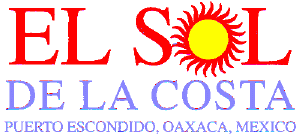

![[parade]](images/sepparade.jpeg) Flags, parades and civic ceremonies mark the month of September, known
in Mèxico as the month of the nation (el mes patrio), which
commemorates the events and individuals who forged and protected Mexican
Independence.
Flags, parades and civic ceremonies mark the month of September, known
in Mèxico as the month of the nation (el mes patrio), which
commemorates the events and individuals who forged and protected Mexican
Independence.
Many of the names are familiar to visitors because literally thousands of streets, neighborhoods, towns and even states are named for these national heroes: Hidalgo, Morelos, Guerrero, Matamoros, Allende, Aldama to name a few.
Independence Day is celebrated on Sept. 16 with parades and civic ceremonies in every village, town and city in Mèxico.
The preceding night (Sept. 15) the Ceremony of the Cry for Independence takes place. It marks el Grito de Dolores (the Cry of Dolores), Father Miguel Hidalgo's impassioned call for a popular uprising that launched the movement for independence from Spain in 1810.
![[Morelos]](images/sepmorelos.jpeg) This was a time when revolutionary upheaval and radical change
swept through both the Old World and the New. The exciting new ideas of
the Enlightenment inspired both the American War of Independence and the
French Revolution. Rationalism, the pursuit of science and the arts, the
promotion of religious tolerance, and a desire for government free of
tyranny - it was pretty heady stuff.
This was a time when revolutionary upheaval and radical change
swept through both the Old World and the New. The exciting new ideas of
the Enlightenment inspired both the American War of Independence and the
French Revolution. Rationalism, the pursuit of science and the arts, the
promotion of religious tolerance, and a desire for government free of
tyranny - it was pretty heady stuff.
In New Spain, it was the criollos, the native-born descendants of Spanish colonists who were stirred by these winds of change. They were the intellectuals and officials, clergy and merchants whose careers and opportunities were limited because they were not Iberians.
Bridling under the reactionary and repressive political, economic and cultural control of Spain, more and more they defined themselves as Americans.
In 1808 Napoleon invaded Spain and, forcing the abdication of King Ferdinand VII, placed his brother on the Spanish throne.
This was met with resistance in Spain and political confusion in the colonies and it offered the independentistas the opportunity to meet and organize under the political context of expressing opposition to an illegitimate king, rather than to Spanish rule.
In 1810 the wife of the alderman of the town of Queretaro, doña Josefa Ortiz de Dominguez, along with Ignacio Maria de Allende, Juan Aldama, Mariano Abasolo among others planned an uprising for that October.
The parish priest of the town of Dolores, Miguel Hidalgo y Costilla, a brilliant academic and fervent campaigner for social justice, was invited to join the group. Royalist authorities got wind of the plot, however, so it was decided to move immediately and on the night of Sep. 15, word was sent to Father Hidalgo.
![[banderas]](images/sepflags.jpeg) At dawn the next day, as people arrived from the surrounding areas
for early mass, Hidalgo issued his call to take up arms against tyranny
and the war for Mexican liberation began. That day his forces, poorly
armed, untrained and undisciplined, marched to Atotonilco and seized the
standard of the Virgin of Guadalupe and made it the flag of the insurgent forces.
At dawn the next day, as people arrived from the surrounding areas
for early mass, Hidalgo issued his call to take up arms against tyranny
and the war for Mexican liberation began. That day his forces, poorly
armed, untrained and undisciplined, marched to Atotonilco and seized the
standard of the Virgin of Guadalupe and made it the flag of the insurgent forces.
A series of rapid victories followed, but inexplicably the rebels did not press their advantage and march on the poorly-defended capital. Royalist forces were allowed to regroup and in the following months the original conspirators were killed in battle or captured and executed.
José María Morelos fought on until his capture and execution in 1815. The struggle was kept alive by small guerrilla groups, notably Vicente Guerrero's in the south and Guadalupe Victoriano's in Veracruz.
It would be 11 years and 11 days after Hidalgo's Grito - Sept. 27, 1821 - before the independence forces entered the capital in triumph to finally proclaim Mèxico free of colonial rule from Spain. The early decades of independence were troubled times for the new nation. The war had devastated the economy and political instability made effective government impossible.
There were also threats from abroad. Spain refused to accept the loss of its colony and blockaded the country. France and the United States pressured for compensation for losses suffered during the civil upheavals, payments the bankrupt young republic was unable to make.
In what became known as the War of the Cakes, Guerra de los Pasteles, the French seized Veracruz and forced the government to sign a treaty paying indemnification, including 60,000 pesos for a baker who had not been paid for cakes consumed by some soldiers.
Then it was the turn of the aggressively expansionist United States. With an ineffectual central government and an army poorly equipped and with unbelievably inept leadership (Does the name Antonio López de Santa Ana ring a bell?), Mèxico was powerless to prevent the annexation of Texas and then the invasion by U.S. forces lead by Gen. Winfield Scott.
But the defending Mexican forces did not lack courage. In 1847 in the capital, the cadets at the military school at Chapultepec offered their lives in a last ditch defense against the invaders. On Sept. 13 these martyrs are remembered as the Heroic Children of Chapultepec.